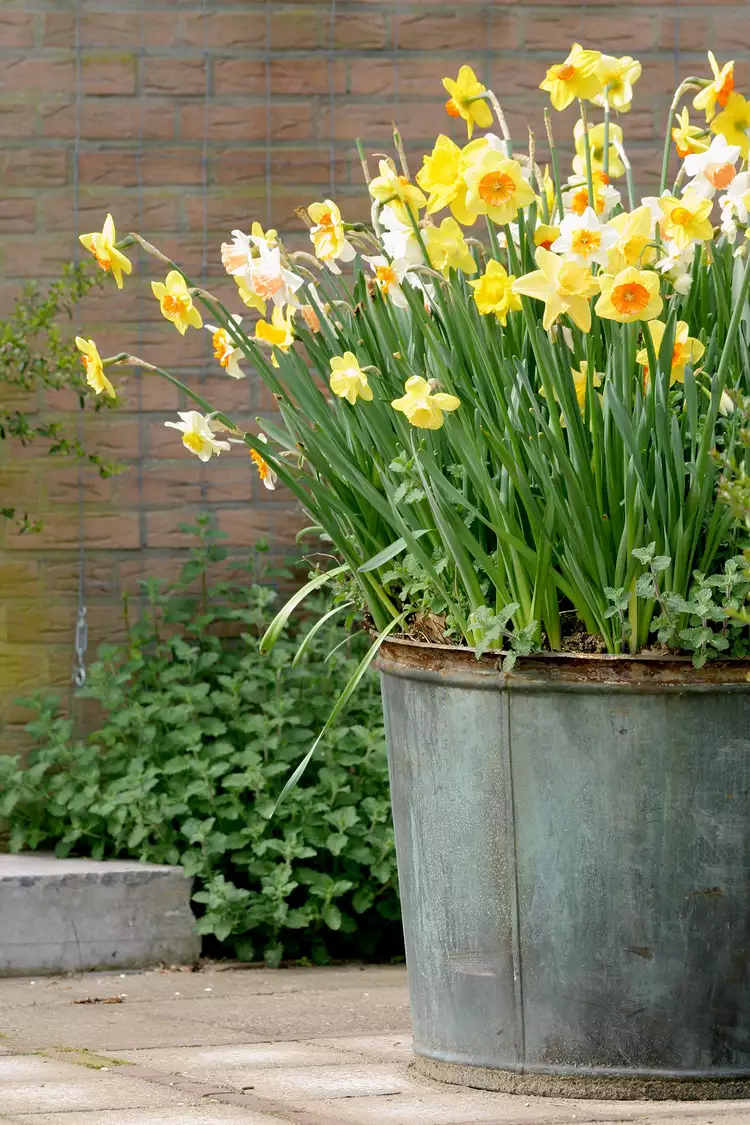11 Bulb Garden Design Ideas to Show Off Spectacular Flowers

Use these tips to make a big impact in your landscape with beautiful spring-flowering bulbs. With a little strategic planting, you'll be able to enjoy these colorful plants for years to come.
Add Pockets of Color
Small groups of bulbs tucked among perennials, shrubs, or rocks create bright accents. Use types with large flowers such as daffodils, tulips, and alliums, and group several together so they make a strong visual statement.
Combine Colors Wisely
Bulbs look stunning by themselves, but they're even more breathtaking in colorful combinations. Because choosing the best combos that bloom together can be a challenge, start with the prepackaged bulbs in catalogs or at your local garden center.
Power in Numbers
Those big, bold masses of bulbs in botanical gardens look amazing, but it can be a challenge (not to mention expensive) to re-create that look in your home landscape. So use masses of simpler combinations of just two or three colors laid out in informal shapes and forms that follow the lines of your beds.
Pair Bulbs With Early Perennials
Pansies are winter-hardy early bloomers, so plant them in fall along with your spring bulbs for a knockout show. Periwinkle, hellebores, and creeping phlox are also good partners for your spring bulbs.
Hide Fading Foliage
Mingle perennials in your spring bulb garden layout to help hide the bulbs' foliage as it fades. For example, peonies, hostas, and perennial geraniums make excellent choices for covering allium foliage; brunnera works well for hiding daffodil leaves.
Make a Meadow
Siberian squill, crocus, and grape hyacinth bulbs are spectacular when blooming by the hundreds in early spring, and they'll slowly multiply over the years, making them perfect for planting in lawns and under trees to create flowery "meadows." For a natural look, toss them by the handful and plant them where they land.
Create Garden Bouquets
Because big bulbs go deeper than little bulbs, you can create spring bouquets by planting in layers. For example, plant tulips about 5 inches deep, then plant grape hyacinths 2 inches over the top of them, either in a container or in a garden bed.
Plan for Continuous Color
Extend your spring bulb display by planting similar-looking bulbs with different bloom times. For example, try three golden daffodil varieties: 'Arctic Gold,' which starts in early to mid-spring, 'Primeur,' which blooms in mid-spring, and 'Pay Day,' which blooms in mid-to-late spring.
Pay Attention to Foliage
Add flowers with variegated foliage to your spring garden layout. Choosing them adds interest to your landscape, even after the flowers fade. Some top choices include tulips 'Unicum,' 'New Design,' and 'Red Riding Hood;' Camassia 'Blue Melody' and 'Sacajawea'; and Fritillaria imperialis 'Aureomarginata.'
Mark Late Perennials
Some perennials, such as butterfly weed and perennial hibiscus, are notoriously slow to come up again in spring. To keep them from creating bare spots in your yard, mix in some spring-blooming bulbs. The bulb foliage will start to fade as the perennials begin to grow.
Showcase Unusual Bulbs
Familiar favorites such as daffodils and tulips in front of the house always look gorgeous. But there are a few more unusual types of bulbs that can make a big impact, too. A selection of fun fritillarias, for example, makes an eye-catching display beside a walkway. Or try planting some foxtail lilies for a striking accent.